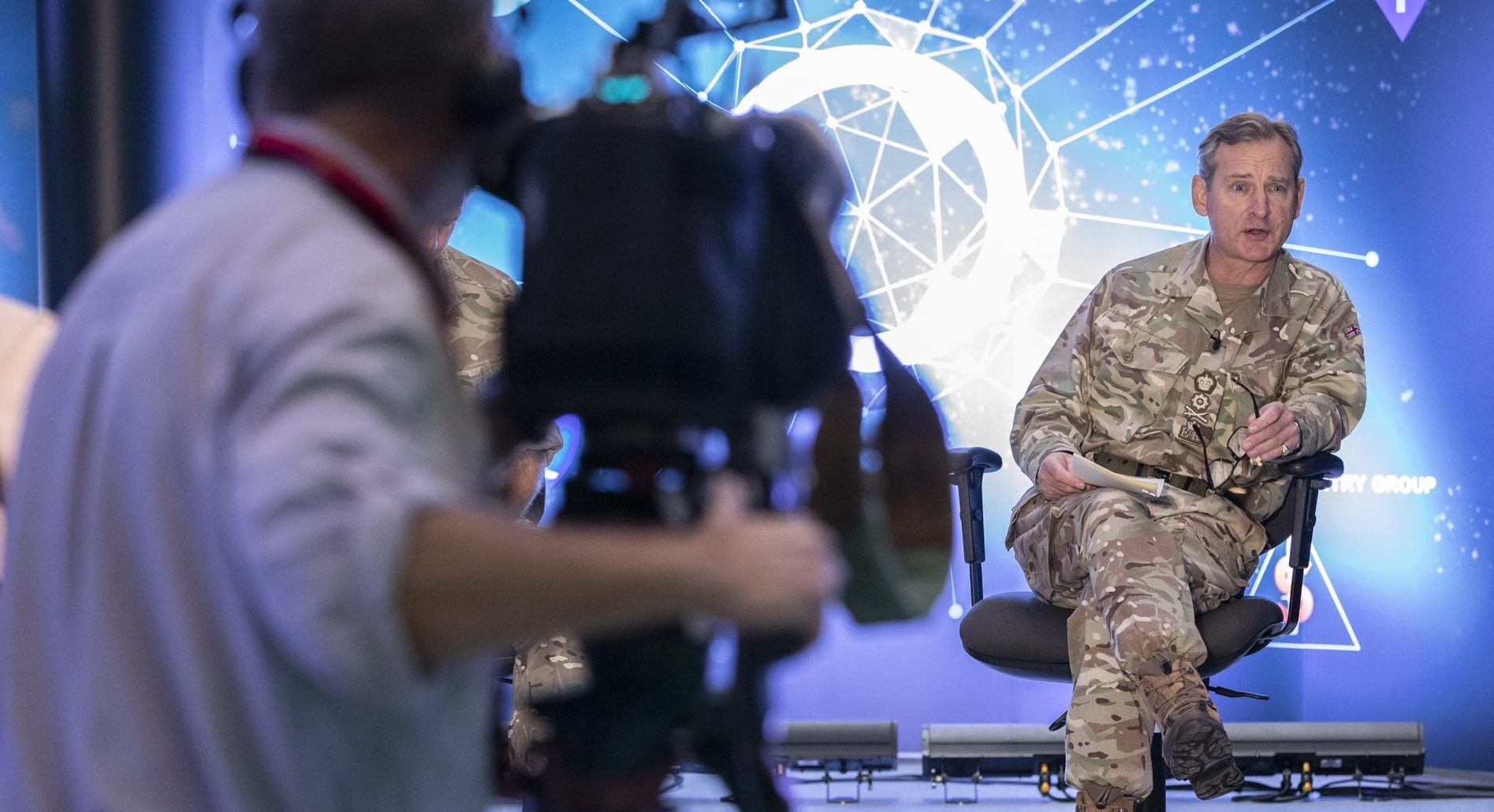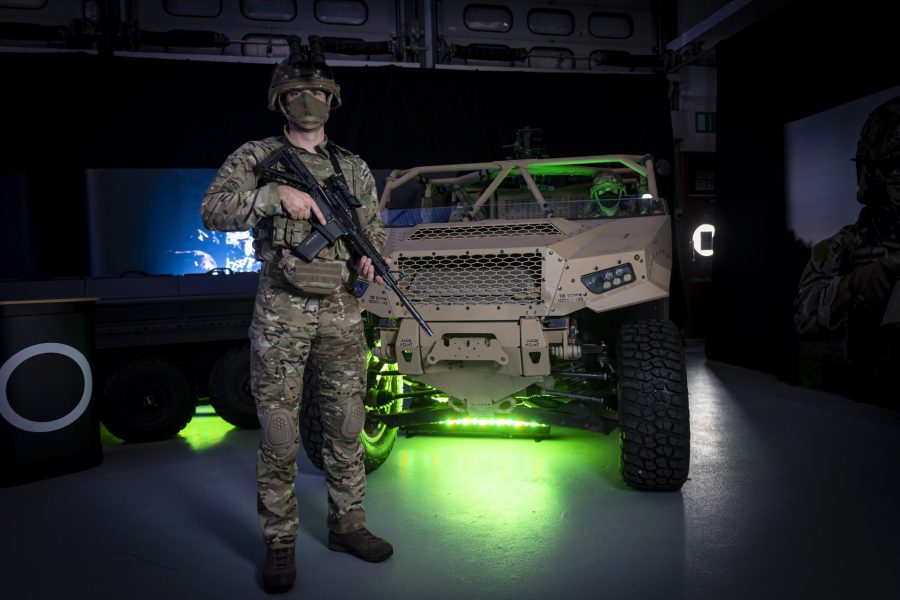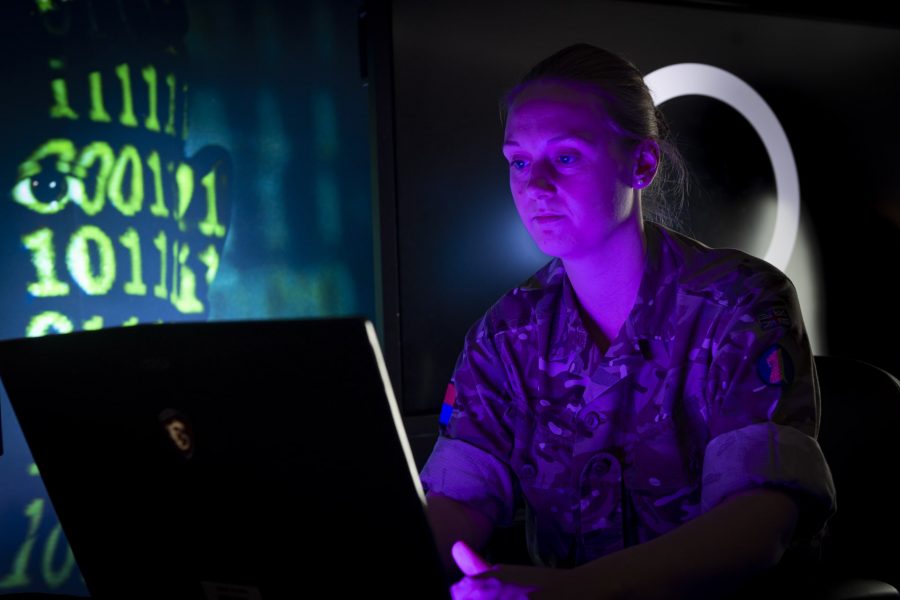
Harry Lye
Delivering a briefing ahead of the upcoming integrated review into defence, security and foreign policy British Army Chief of the General Staff (CGS) General Sir Mark Carleton-Smith said the future of the army would be “about the integration of ‘boots and bots’, of proxies and pixels, of the conventional and unconventional”.
Carleton-Smith told reporters that while he did not want to ‘prejudge’ the results of the Integrated Review, his vision for the British Army: “Will be about the integration of ‘boots and bots’, of proxies and pixels, of the conventional and unconventional. An Army which is fit for the demands of the digital age: more lethal, more agile and more expeditionary, more of the time.”
He added that moving forward the British Army is set to be more forward deployed alongside the Royal Navy and Royal Air Force (RAF), as well as other government departments and the private sector.
Carleton-Smith explained: “These will provide ‘lily pads’ to enable understanding, change narratives, provide reassurance to allies and deterrence for adversaries and to secure economic interests for the promotion of shared prosperity.
“In short, they will give the UK more strategic choice and influence.”
The British Army’s 2nd Battalion, Parachute Regiment – 2 PARA – and School of infantry are set to receive robotic vehicles this month.
Carleton-Smith said the future British Army would be enabled by a ‘digital backbone’ and ‘integrated intelligence picture’. That army, he added, would have the ‘ability to anticipate, to assert, and to act – and at a speed of relevance to decision-makers and observers alike’.
Priorities for the Army will be growing its special operations and intelligence capabilities, as well further developing ‘intelligence and counter-intelligence; information operations; and unconventional warfare’ expertise.

Motherships, artillery and swarming drones
The General said that the technology available to the British Army must ‘also change’ adding that the current system of fielding new technology was not up to scratch for the modern era. He said: “The current system for fielding new technologies is simply not good enough for the digital age – to retain the competitive advantage requires the ruthless pursuit of innovation and novel tech – fusing current operations and training with prototype technology. Military needs matched with civilian innovation.”
In a future force, Armoured Fighting Vehicles (AFVs) will deploy as ‘motherships’ acting as command hubs for robots. This Carleton-Smith added would be supported by ‘longer range and more powerful artillery than the Army have ever used, firing on targets identified by swarms of drones.’
He added that the UK faced great resurgent power competition between nation states. In this ‘more fragmented and competitive world’ Carleton-Smith added that the nature of conflict in itself was moving away from a clear distinction between peace and war “to warfare of the digital age; endlessly competitive, inherently complex, and always blurred – and with the maturing battlegrounds of cyber and space to compete in.”
Carleton-Smith said: “This will not only be good for the Army and the wider integrated force but also for the UK; on top of the £15bn annual contribution to the British economy, the Army will incubate British innovation and British technology – something we know is world-leading.”

“An Asymmetric Army for the Digital Age”
Outlining his plans for “An Asymmetric Army for the Digital Age” Carleton-Smith said: “It perhaps won’t come as a surprise to you that my vision for the Army is one of unrelenting transformation; of how we train, operate and fight.
“To build an Army that thinks sharper and moves faster, designed to exploit weakness and counter strength, and to do it all of the time.”
He concluded: “This Army must be able to challenge our adversaries operating in the grey zone between war and peace.
“For our aim should be to prevent a war as much as win one. We need forces to shine a light into the shadows.”
No comments:
Post a Comment